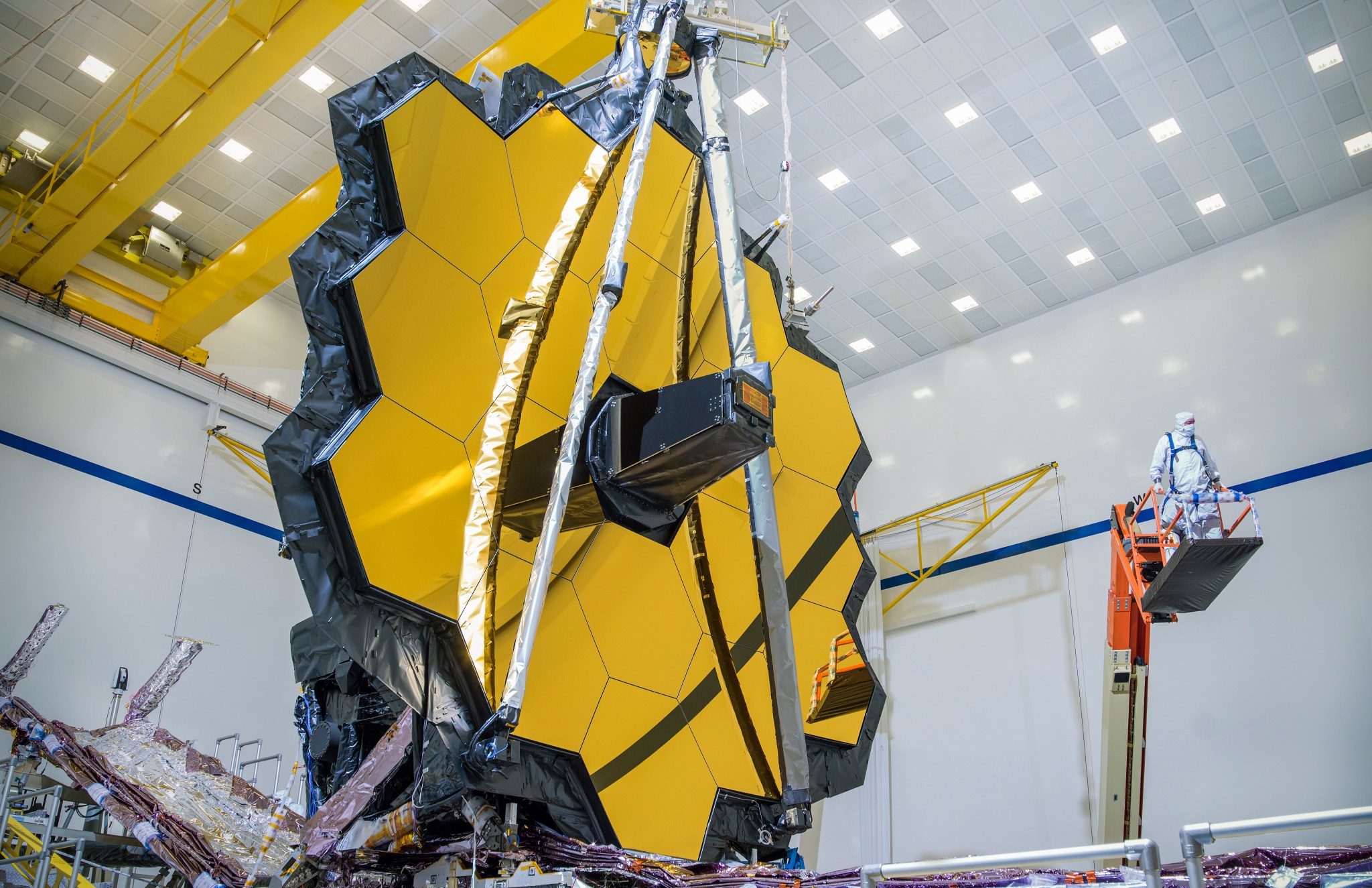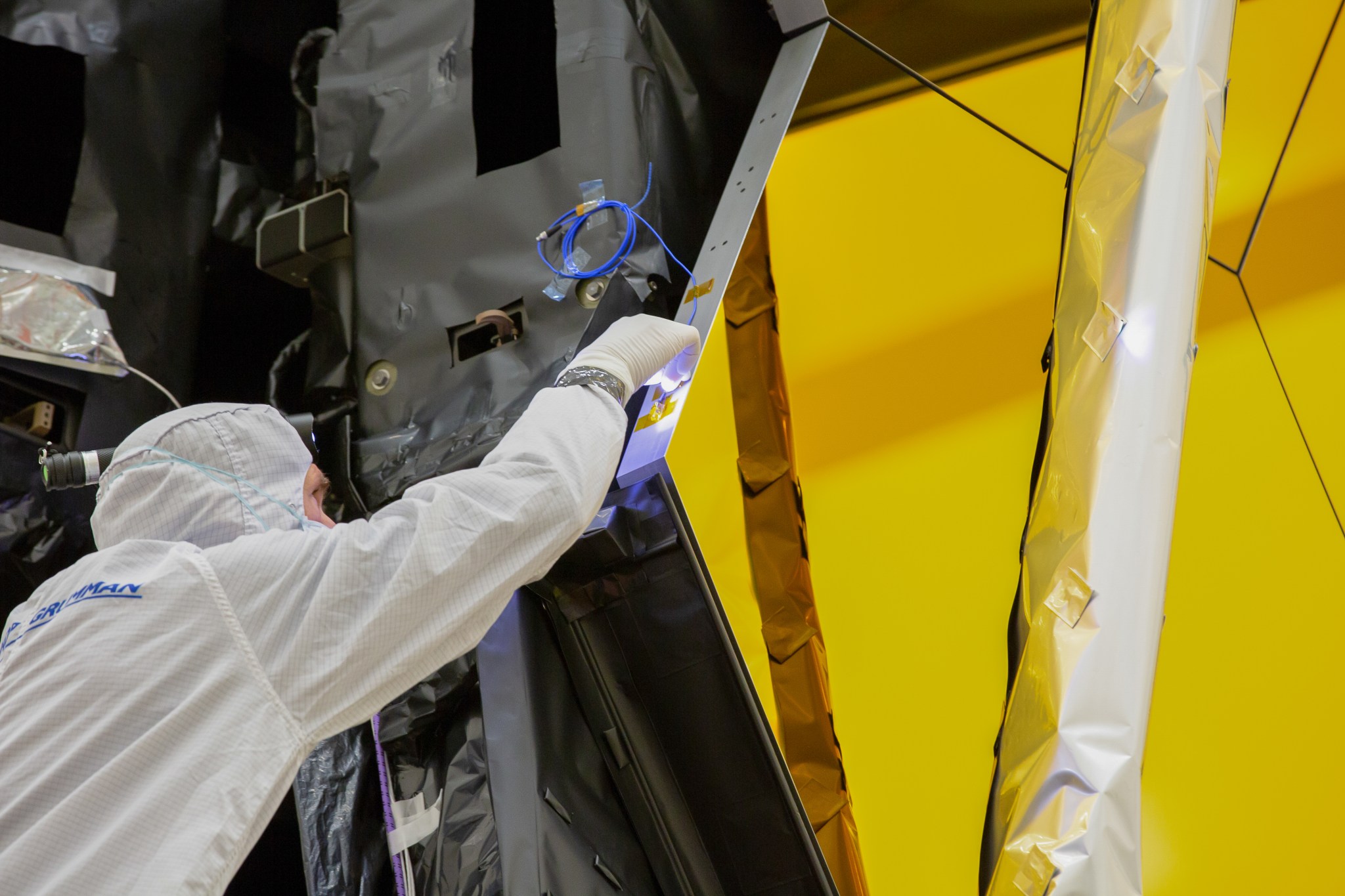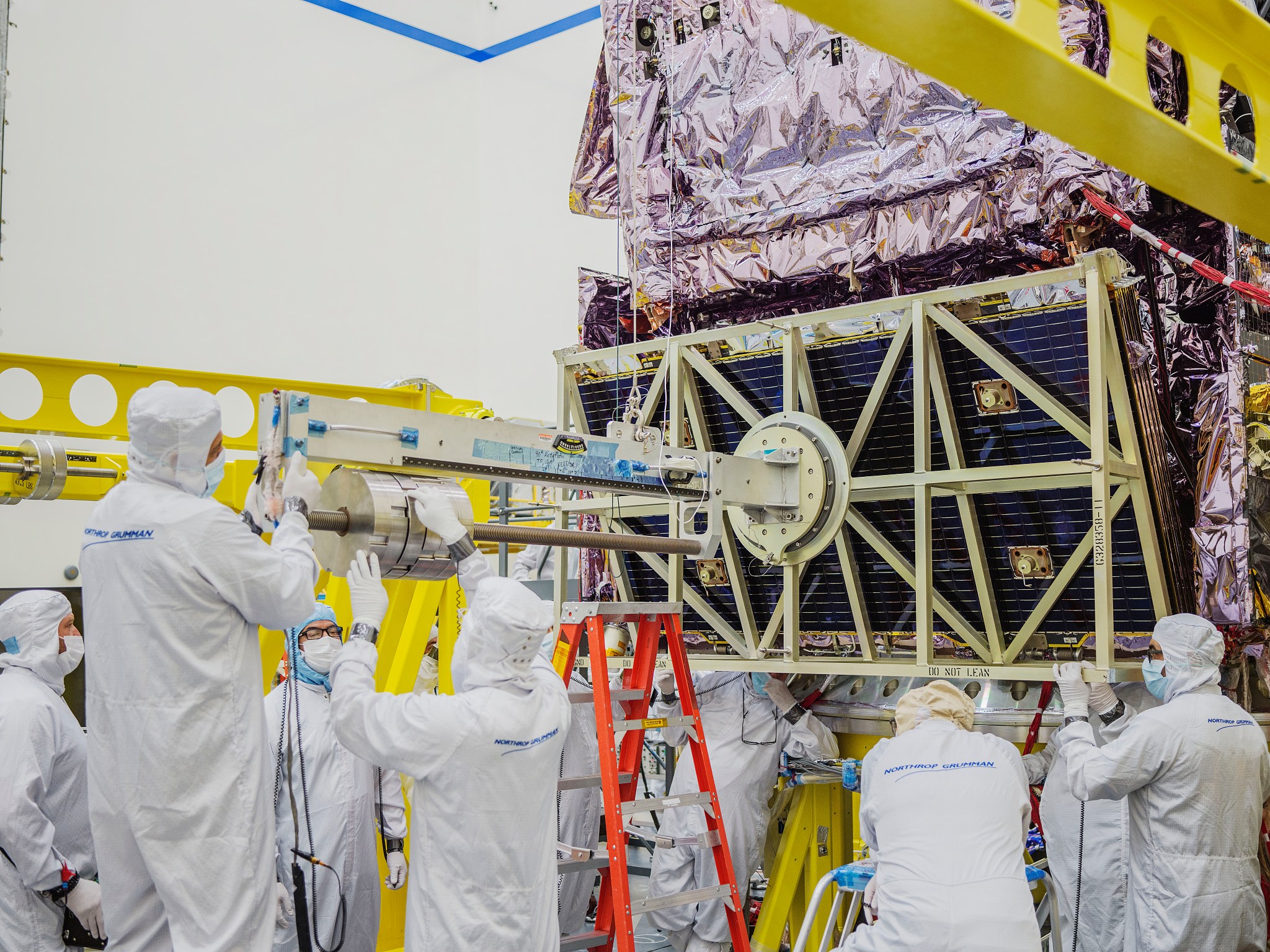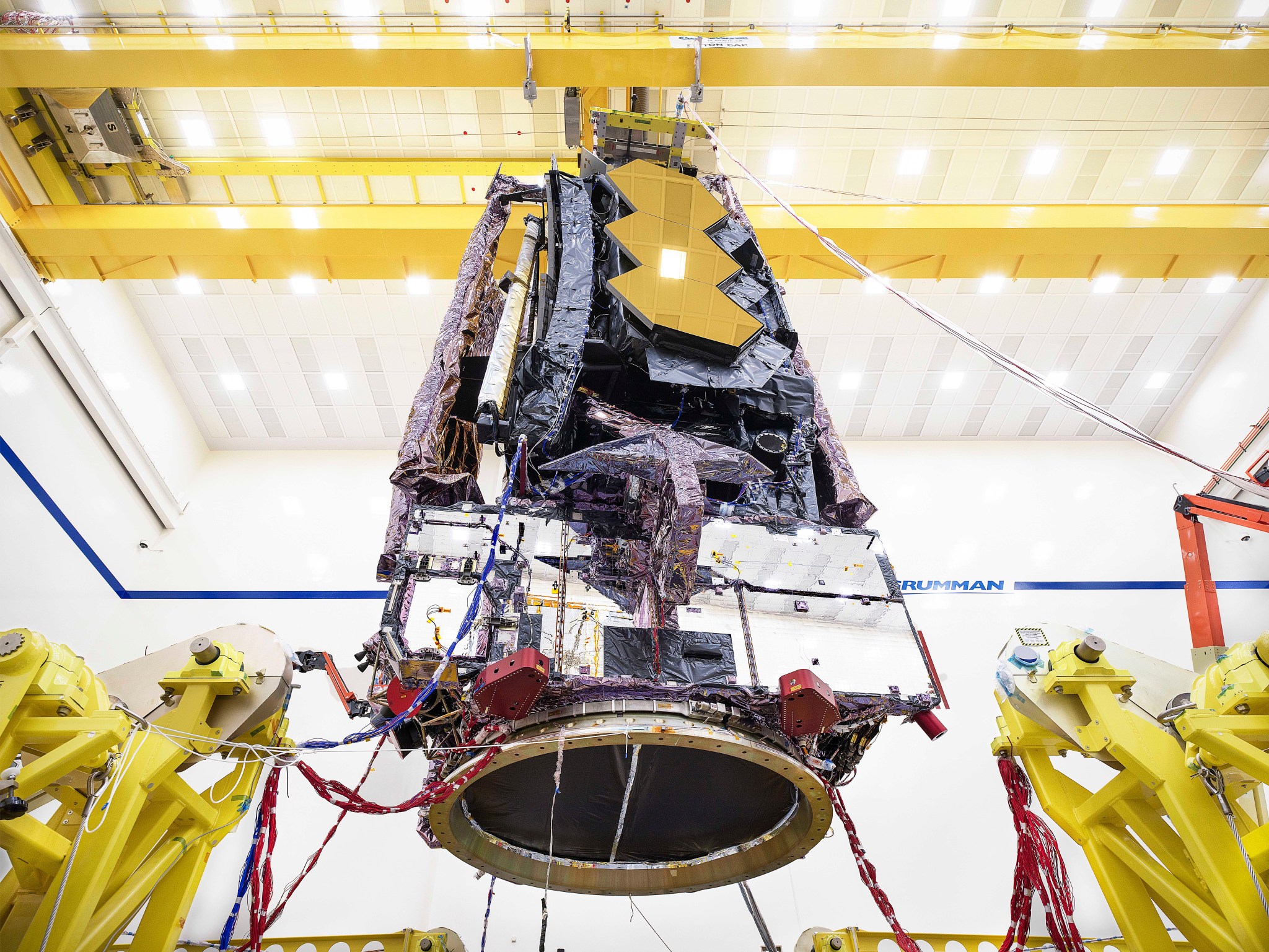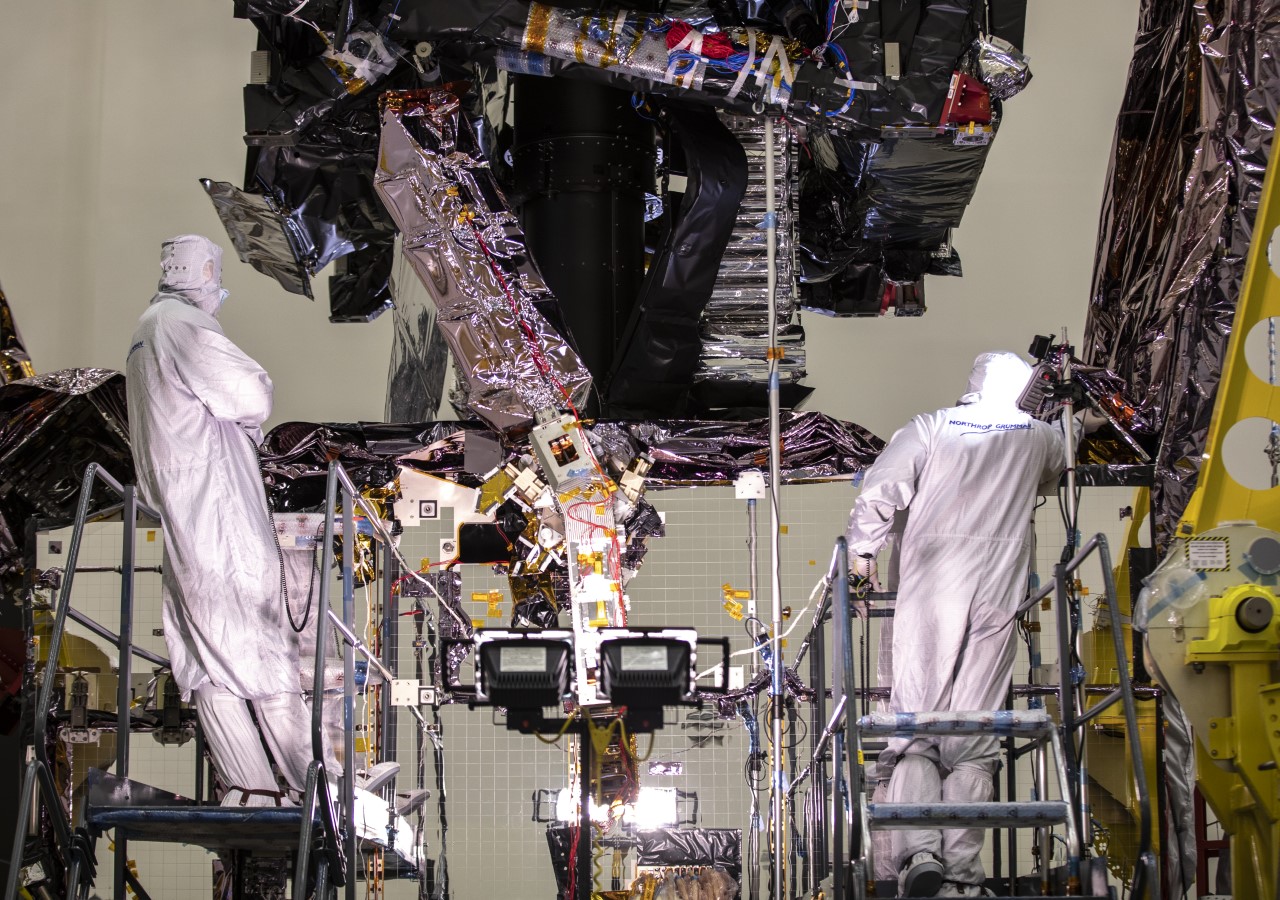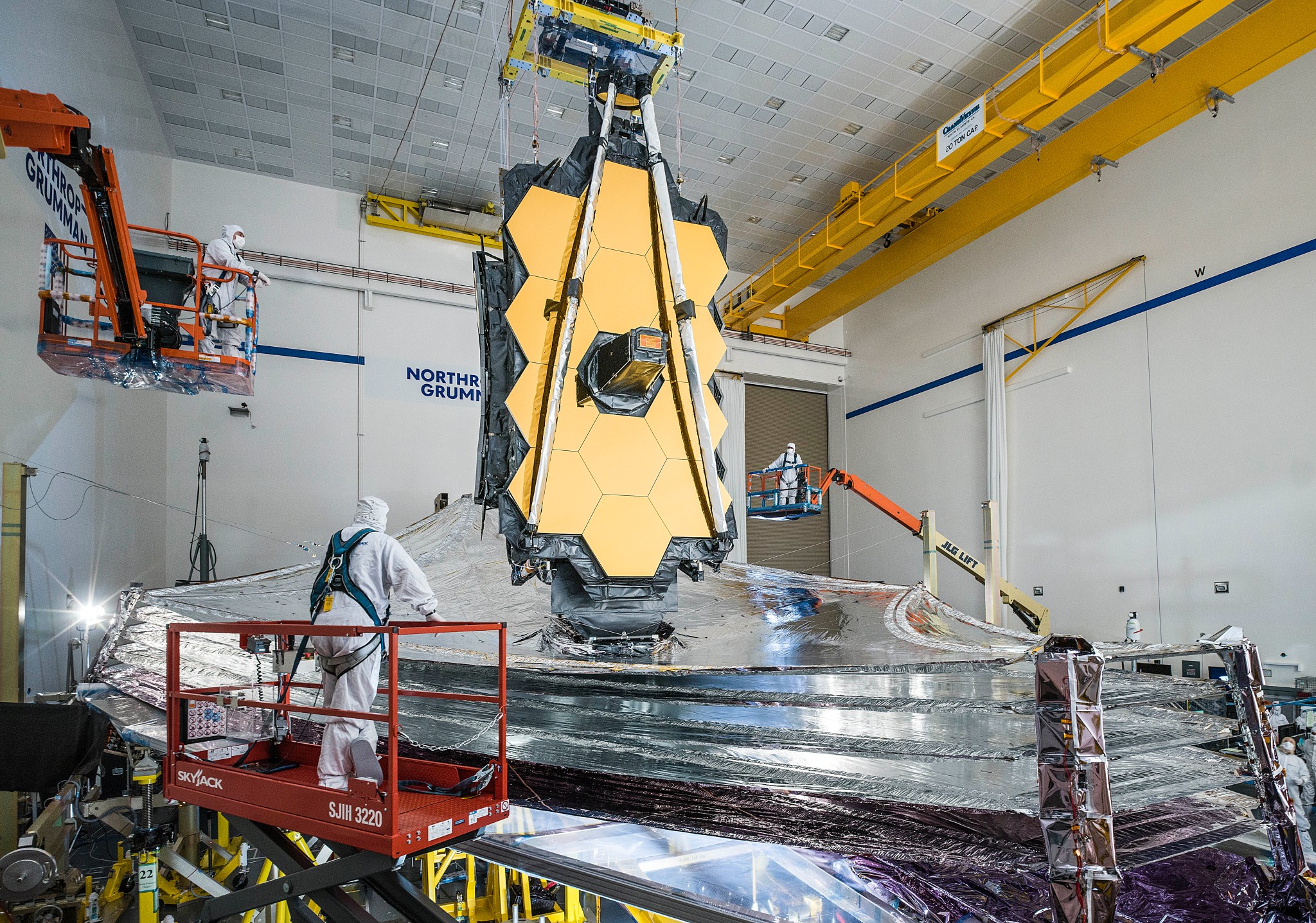2020 was a year of monumental progress for NASA’s James Webb Space Telescope.
The world’s largest and most powerful space observatory advanced through a series of engineering milestones at Northrop Grumman’s facilities in Redondo Beach, California, in preparation for its launch in 2021. These successes are a testament to the hard work and ingenuity of mission engineers and technicians, who have persevered through the unprecedented challenges presented by the ongoing COVID-19 pandemic.
Take a look back on Webb’s top 10 moments in 2020:
March
Webb’s Iconic Mirror Unfurls Its Wings
One of Webb’s most recognizable features is its gold-coated primary mirror. With a 21-foot 4-inch (6.5 meter) diameter, the mirror is so big that it must fold into three sections in order to fit into the telescope’s launch vehicle. In its compact form, the mirror’s left and right wings are carefully tucked behind its center section.
During mirror deployment testing in early March, Webb slowly unfurled each of the mirror’s wings, just as they would unfold in space shortly after launch. Engineers and technicians used special gravity-offsetting equipment in order to simulate a zero-gravity environment. Read more…
Credits: NASA’s Goddard Space Flight Center
May
First Look at a Fully Folded Webb
In May, the full observatory was successfully folded into its launch position for the first time. Because Webb is too large for any available rocket in its expanded form, it has been specially engineered to collapse and tightly pack into the 17.8-foot (5.4 meter) section of the Ariane 5 rocket called the payload fairing. This milestone also ensured that Webb would be prepared for its final set of environmental testing, simulating what the observatory will experience during liftoff. Read more…
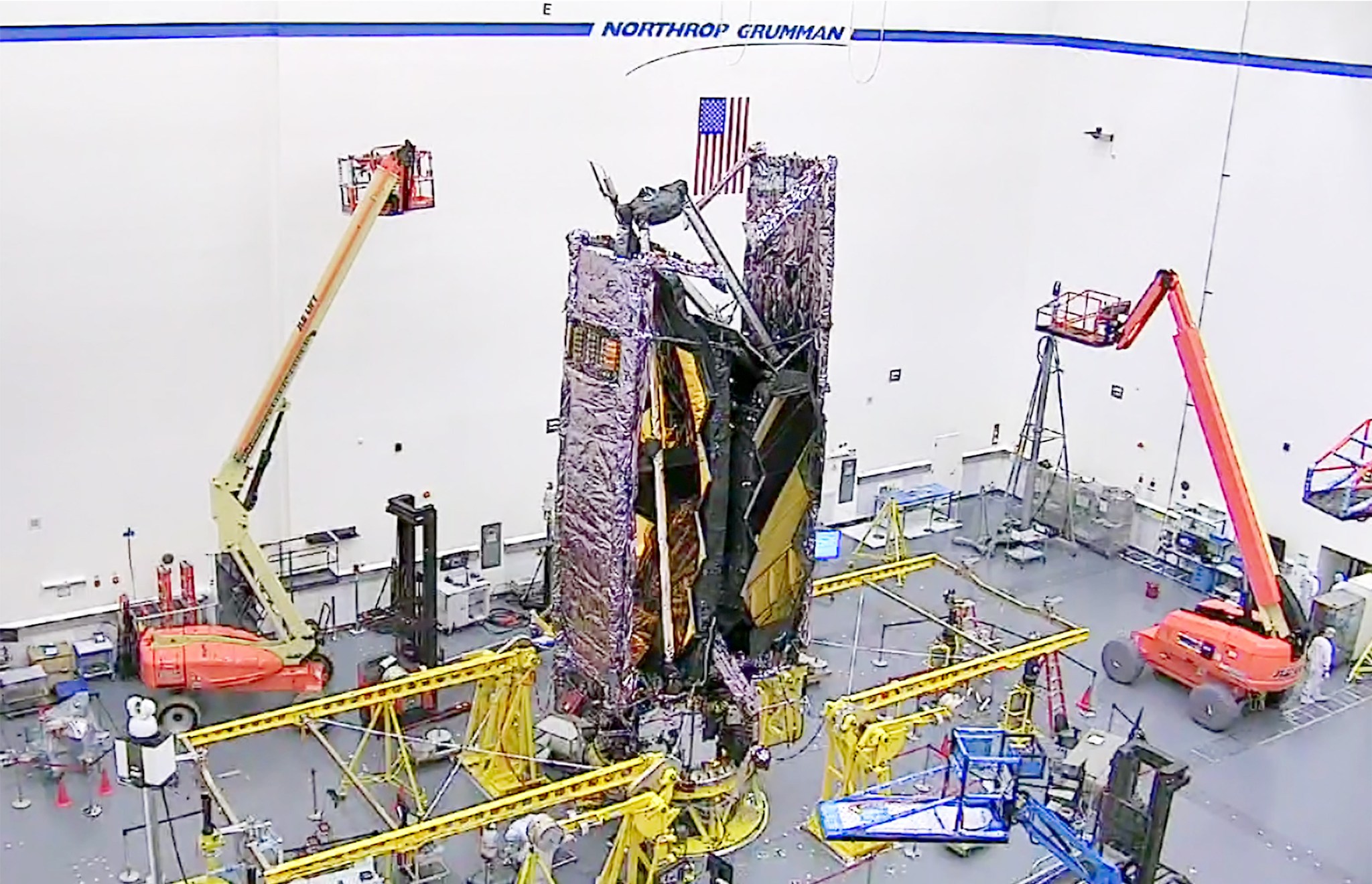
June
Webb’s Deployable Tower Reaches for Success
Webb’s Deployable Tower Assembly is a critical structure in the deployment process. Its role is to lift up the observatory’s mirrors and instruments, distancing this section of Webb from the lower sunshield and spacecraft bus. This gap enables Webb’s cooling systems to bring the mirrors and sensors down to the frigid temperatures they need to perform science.
In testing, the deployable tower, a sturdy pipe, was slowly extended 48 inches (1.2 meters) upward. To replicate the environment of space, engineers used a creative system of pulleys, counterbalances and more to negate the effects of Earth’s gravity. Read more…
Credits: NASA’s Goddard Space Flight Center
July
Webb Passes Its Comprehensive Systems Check
For the first time since being fully assembled, the Webb telescope was given a complete systems check of all of its software and electrical components. For 15 consecutive days, the testing team worked around the clock to meticulously verify each unit of code as they were combined into larger and larger software elements.
This test established a baseline of electrical functional performance, setting up a standard of comparison for another systems check after the completion of environmental testing. Engineers plan to use the “before and after” results, which should stay consistent, to demonstrate that the spacecraft can withstand the rigors of launch. Read more…
August
Testing Commands for Webb’s Scientific Instruments
Picture a message traveling one million miles away from Earth and back. In August, Webb operators demonstrated that each of the observatory’s scientific instruments would be able to respond to commands once in space.
During the test, commands to turn on, move and operate Webb’s instruments were relayed from the Mission Operations Center at the Space Telescope Science Institute (STScI) in Baltimore, Maryland. The team connected the spacecraft to the Deep Space Network, an international array of giant radio antennas, and used special equipment to mimic the radio link that will exist between the observatory and the network when Webb is in orbit. After the commands passed through the Deep Space Network emulator to the flight telescope, Webb’s instruments transmitted data back to the Mission Operations Center. It was the first time operators were able to use both the actual flight hardware and ground system in a complete, end-to-end cycle. Read more…
Webb Reunites with Its “Powerhouse” Solar Array
Webb’s 20-foot (6-meter) solar array will be its “powerhouse,” supplying energy to all of the telescope’s scientific instruments and communication and propulsion systems. Although the telescope will only require about 1 kilowatt of power, roughly the same amount of energy as a microwave, the array is capable of generating nearly double that amount. During this month, the solar array was reconnected to the main observatory for one of the final times before launch. Read more…
Weathering the Thunderous Noise of Launch
Webb’s final environmental testing began with the conclusion of acoustic testing. The full telescope was blasted with intense sound waves at levels higher than 140 decibels, corresponding to the high frequency noise it will experience on the Ariane 5 rocket at launch. Read more…
October
The Webb Telescope Proves Ready to Rumble
The second half of Webb’s final environmental testing involved the telescope being placed onto a specialized shaker table. This table simulated the low frequency vibrations — the shaking and jostling — that the telescope will endure as it blasts off into space. Engineers monitored nearly 600 channels of motion data to determine that the tests were a success. With vibration testing under its belt, Webb has now shown that it can survive all of the extreme conditions that take place during launch. The next environment Webb will encounter is space itself. Read more…
Credits: NASA’s Goddard Space Flight Center
November
Another ‘Uplifting’ Tower Extension Test for Webb
After the events of environmental testing, the team must ensure that Webb operates just as it did before the jarring noise and powerful shaking it experienced. This process included another Deployable Tower Assembly test, which took place in November. The tower will be deployed two more times before launch, but this milestone marked the start of Webb’s final full deployment and checkout sequence before the observatory is transported to its launch location in South America. Read more…
December
Webb Stretches Out Its Sunshield
In December, Webb tested and deployed its 5-layer sunshield for the last time on Earth. This unique structure will help block heat from reaching the telescope’s optics and sensors, which must be kept extremely cold for Webb to see in infrared light. In space, the sunshield will divide the observatory into a warm side always facing the Sun, versus a cold side permanently facing deep space.
Fully deployed, the tennis court-sized sunshield resembles a giant kite. As in previous testing during October 2019, engineers carefully monitored the deployment and tensioning of each layer of the sunshield to make sure that the process will be seamless once Webb is in orbit. Read more…
“2020 has been an incredible year for the James Webb Space Telescope team, made even more remarkable by all of our major accomplishments being achieved against the backdrop of a pandemic. I am extremely proud of our team across NASA, the European Space Agency, the Canadian Space Agency, Northrop Grumman, the Space Telescope Science Institute (STScI), and the rest of our industrial and academic partners,” said Bill Ochs, Webb project manager for NASA Goddard Space Flight Center in Greenbelt, Maryland. “In 2021, we look forward to completing the final deployments and launch readiness tests before shipping and launching the observatory.”
Webb is NASA’s next great space science observatory, which will help in solving the mysteries of our solar system, looking beyond to distant worlds around other stars, and probing the mystifying structures and origins of our universe. Webb is an international program led by NASA, along with its partners ESA (European Space Agency) and the Canadian Space Agency.
Banner Image: The James Webb Space Telescope is shown with its fully deployed primary mirror at Northrop Grumman’s facilities in Redondo Beach, California.
Credits: NASA/Chris Gunn
For more information about Webb, visit www.nasa.gov/webb
Additional video resources can be found here: https://svs.gsfc.nasa.gov/Gallery/JWST.html
By Isabelle Yan
NASA’s Goddard Space Flight Center, Greenbelt, Md.



























